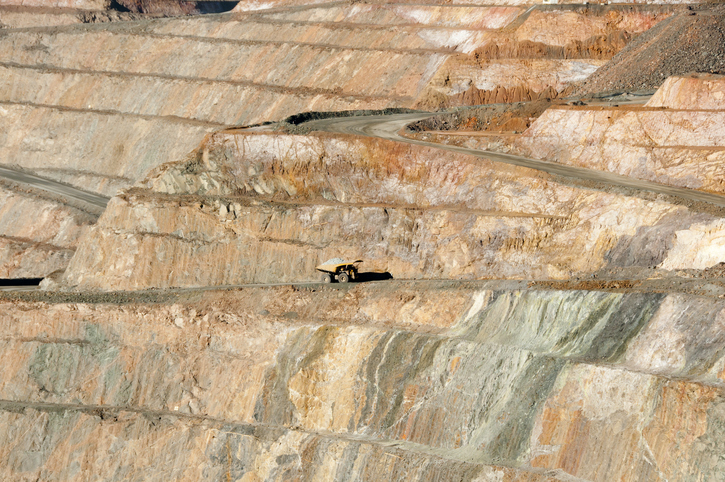
In May, the United States and Australia signed a climate, critical minerals and clean energy transformation compact that establishes a framework for collaboration on climate issues, clean-energy technology and critical-mineral supply chains. It mainly discusses critical minerals in the context of their necessity in manufacturing clean-energy technologies.
The intent of the framework is to ‘coordinate policies and investments to support the expansion and diversification of responsible clean energy and critical minerals supply chains’. In this case, diversification basically equates to reducing dependence on China, in which various links in the critical-mineral supply chain are heavily concentrated. While the compact establishes a new ministerial dialogue, the Forum on Clean Energy Industrial Transformation, and an Australia–US taskforce on critical minerals, the most vital component of strengthening critical-mineral supply chains is investment in critical-mineral projects.
The critical minerals industry often cites a lack of capital as a barrier to stronger and more diverse supply chains. Mines are capital-intensive projects that can cost tens of billions of dollars. Therefore, any compact that seeks ‘an unprecedented expansion’ in critical mineral supplies must provide capital for mines. The need for government capital is further heightened given the lack of private-sector funding for mining.
The compact commits to using ‘domestic financial instruments and incentives to foster greater integration of responsible clean energy supply chains’, which includes critical-mineral supply chains. It also says the US and Australia will seek industry input on financial incentives, and it lists the US Export–Import Bank as a possible financing agency. Notably, in a joint statement with Australian Prime Minister Anthony Albanese, US President Joe Biden said that he would ask Congress to add Australia as a ‘domestic source’ under Title III of the Defense Production Act, enabling Australian projects to access significant US government funds.
Beyond those measures, the compact doesn’t offer funding specifics—but that was always going to come next, with industry input. To ensure the compact’s success, the US should consider a range of policies for funding mines in Australia.
First, the US should fund Australian mines under the compact, not refineries, which it should invest in domestically to diversify the critical-mineral supply chain. Mining is geographically constrained by the location of mineral deposits, but refining is largely determined by capital and regulations. For example, China has only 3% of global cobalt reserves and produces just 1% of global cobalt ore, yet it controls 77% of global cobalt refining capacity. Similarly, the US could fund enough refining capacity to satisfy domestic demand even without comparably large mineral reserves—especially with Australia on board. By funding Australian mines and the minimum level of crude refining required to economically ship critical minerals to the US to be refined, the US could effectively diversify the critical-mineral supply chain.
That said, the US should only fund Australian mines that produce minerals that are lacking in the United States and Canada. US critical-mineral supply chains are most secure when they are in or near the US and under friendly control. US taxpayer dollars should not be expended on distant mines when nearby mines are available and can meet demand. Importantly, this provision could make the proposal for funding Australian mines more palatable to Congress.
Second, the US should allow companies to partner in a US-funded mine only if they are not owned in any way by foreign entities of concern, including all Chinese entities. The US should not fund Australian mines where Chinese entities can benefit financially or influence the project at the expense of US taxpayers. To protect US national security, if an Australian company is seeking to participate in a US-funded mine in Australia, it should have to first divest any shares held by entities of concern.
American companies should have a controlling interest in US-funded mines, so that the US government can enforce compliance with US regulations, such as blocking Chinese companies’ involvement or investment in the mine. Partnering with experienced Australian partners will also enable less experienced US companies to build valuable mining skills, effectuating two of the compact’s goals: ‘to encourage stronger industrial collaboration’ and ‘to support workforce development in critical minerals’.
Lastly, the US should require that mined materials from Australia be refined by American companies in the US because diversifying the critical mineral supply chain is the primary reason for funding mines in Australia. That requirement will grow the country’s refining capacity and downstream processing for applications like the production of alloys for permanent magnets and cathode material for electric vehicle batteries. The US should also require that the mined material have an end use in a strategic US sector like aerospace or transportation, not consumer electronics like televisions and mobile phones.
The US should also require all companies participating in the mine to stop operating in China and selling their products to Chinese entities. Nor should the US allow companies to use earnings from a US-funded mine to support their operations in China or sales to Chinese entities. The US should not effectively subsidise companies that operate in China or sell products to Chinese mineral companies, which are beholden to the Chinese government.
The compact is a satisfactory starting framework for strengthening critical-mineral supply chains between the US and Australia. How the two countries deploy capital to mineral projects will determine the compact’s success, and US funding for mines in Australia could help achieve the compact’s goals. The stipulations attached to such an arrangement would help to ensure that US–Australia supply chains are diversified, protected from Chinese influence, and forged by a workforce in both countries.
In exchange for its minerals, Australia would get investment and a diversified supply chain, and in exchange for its capital, the US would get access to those minerals and its own diversified supply chain. Such an arrangement would serve the needs of both countries and help achieve the compact’s goal of promoting a ‘responsible, sustainable, and stable supply of critical minerals.’

